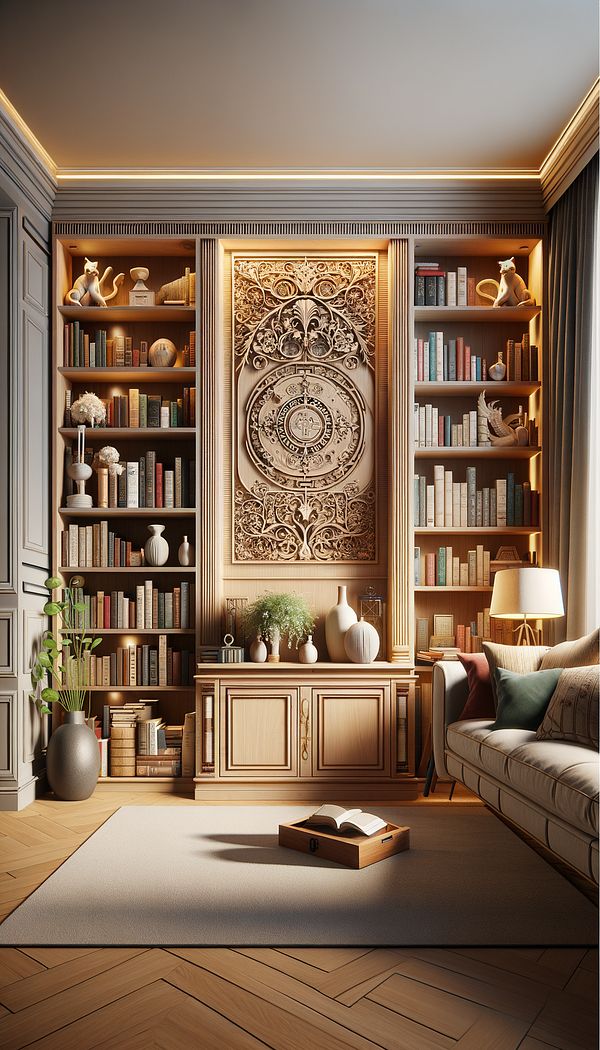What is an Ambry?
An ambry is a recessed cabinet or niche traditionally used for storage in walls.
Description
An ambry is a unique architectural element with a practical application in interior design, primarily for storage. Traditionally, ambryst are built into the walls, creating a niche or alcove that serves as a hidden cabinet. This allows for efficient use of space, especially in areas where floor space is limited. Ambryst can be found in various settings, from kitchens and dining rooms to churches and historic buildings, reflecting a versatile range of uses.
The design and use of an ambry can vary widely. In religious settings, ambryst have historically been used to store sacred vessels and vestments. In residential and commercial spaces, they might be used to store anything from dinnerware to documents. The aesthetic appeal of ambryst, combined with their practical purpose, makes them a fascinating feature in interior design. Modern interpretations may adjust the traditional concept to fit contemporary spaces, incorporating innovative materials and design techniques.
Choosing to incorporate an ambry into a design project involves considerations related to the available space, the intended use of the ambry, and the overall aesthetic goal. When well-executed, an ambry can add both function and character to a space, making it a unique design element.
Usage
In residential design, an ambry might be incorporated into a living room wall to store books or display decorative objects. In a kitchen, it could serve as a niche for holding spices or dinnerware. In commercial spaces like restaurants or hotels, ambryst can be used to store linens or table settings, blending seamlessly into the decor while providing necessary storage.
FAQs
-
Can an ambry be added to any type of wall?
Adding an ambry to a wall requires enough depth and structural support. It’s best suited for interior walls that don't affect the building's structure and have sufficient space for creating a recess.
-
How is an ambry different from a traditional cabinet?
Unlike traditional cabinets that are added onto a wall or stand on the floor, an ambry is built into the wall, offering a seamless look and saving floor space.
-
Are ambryst suitable for modern interiors?
Yes, ambryst can be designed with modern materials and styles to fit seamlessly into contemporary spaces, offering a blend of traditional function and modern aesthetics.
Practical Application
When considering incorporating an ambry into your design, think about the specific needs for storage and how it can complement your space's aesthetic. Measure the depth of the wall to ensure it can accommodate the ambry without affecting structural integrity. Choose materials and finishes that harmonize with the room’s overall design theme.
-
Finger PlatesFinger plates are protective plates mounted on doors to prevent wear and tear from frequent handling.
-
Lit à la polonaiseA Lit à la Polonaise is a type of decorative bed characterized by its domed or arched canopy supported by three or four posts.
-
AdamesqueA style related to the designs of the Adam Brothers, characterized by neoclassical elements.
-
Knob TurningKnob turning refers to the action of manipulating a knob to adjust settings or facilitate operation.
-
CenterpieceA centerpiece is an item or group of items placed at the center of a table or surface to serve as the focal point of a setting.
